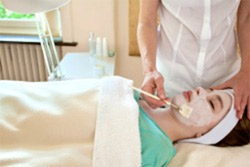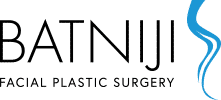What Is the VI Peel?

If you’ve been researching skin rejuvenation, you’ve probably heard of the popular procedure known as a chemical peel. However, there are many, many different types of peels available, using various chemicals and involving a certain amount of downtime according to the depth of the peel. The right peel for each patient has to do with skin type, goals, and the ability to cope with recovery. The great news is there is an option to suit just about everyone. While many peels are made using only one type of chemical, other treatments use a mixture of powerful chemicals to help optimize results. One of these is known as the VI peel. But what is so special about the VI peel?
A Combination of Chemicals
The VI peel is unique in that it uses a combination of chemicals to optimize results without excessive discomfort or downtime. Most chemical peels are classified by the chemical that makes up the majority of each peel’s formula. The VI peel, on the other hand, uses five different chemicals to resurface the skin: trichloracetic (TCA), retinoid, salicylic acid, phenol, and Vitamin C.
What It Treats
One of the advantages of the VI peel is its versatility. The treatment is safe for all skin types, and does not involve many of the complications that can occur with laser treatments on darker skin.
The VI peel also works for more than just the face—it can also be used on the chest, an area that often experiences the same kinds of skin problems.
The main problems this peel addresses include pigmentation issues and overall skin texture. VI peels can improve:
- Melasma (pregnancy-triggered skin darkening)
- Hyperpigmentation (general skin darkening)
- Sun damage
- Brown spots
- Aging skin (peel stimulates collagen production)
- Poor skin tone and texture
The Process and Recovery
The treatment process for the VI peel is the same as for other chemical peels, with the peel solution being carefully applied to the face for a controlled amount of time before being neutralized. The procedure is gentle and involves very little discomfort.
Recovery is simple, involving only gentle cleansing and application of appropriate solutions and creams as directed. But patients will need to be diligent about skincare, particularly during the week the skin is peeling following treatment.
Sun protection is vital following any chemical peel to prevent pigmentation problems. A strong sunblock combined with smart sun habits is advised to avoid complications, and these guidelines are not limited to simply the healing period. Patients should continue to practice good sun protection even after the skin has healed.
Some patients may also benefit from using a bleaching agent a week following treatment. Exfoliation should be avoided for six weeks after each peel session, and it is important that patients do not touch and pick at the face during the peeling process. Full pre- and post-care instructions will be provided to each patient, and should be followed as closely as possible for good results.
Maintenance
While some patients choose to only have one VI peel treatment, others see the benefit in continuing treatment for ongoing beautiful skin. These peels can be repeated every 6-8 weeks if desired; this schedule is necessary in some cases for good results. Some patients require 2-4 treatments to reach their goals, but it all depends on the patient’s skin and needs. Others choose regular VI peels simply to maintain good skin tone, texture, and youthfulness. This is highly recommended for ongoing satisfaction with the results.
The Right Peel for You
The VI peel is a great choice for many patients, but it’s not the only option available. Chemical peels come in varying strengths, and can be used for everything from mild skin refreshment to anti-aging. However, the only way to figure out which peel is likely to work for you is to speak with an expert facial plastic surgeon and have your skin assessed, along with your lifestyle, budget, and other factors. This way, you can optimize your treatment based on your goals and needs.
Ask Your Questions
If you would like to move forward with skin resurfacing, then you probably have some questions. The internet can be a great resource for learning the basics of chemical peel treatment, but it’s no substitute for the advice from a board certified facial plastic surgeon. Getting advice specific to you is one of the biggest benefits of your consultations, so use the time wisely.
Dr. Rami K. Batniji offers a wide range of skin resurfacing procedures, facial plastic surgery, and more. If you would like to schedule a consultation with Dr. Batniji at his Newport Beach (949-650-8882) or Beverly Hills (310-467-2180), CA, offices, call either location today.

